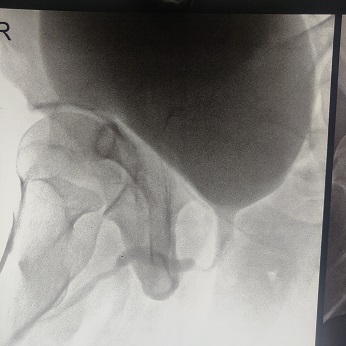- Q. What is the best time to start doing CIC for a SCI person?
Answer. Sooner the better, But it should be started only when the SCI person has understood what is to be done and he is prepared to deal with its nuances. After understanding the process, when patient is willing to start doing CIC.
You should not force an unwilling patient to start doing CIC, unless after due understanding, he agrees to it.
Unwilling patient is likely to stop doing it at the first instance and will change over to an alternative method of bladder management.
Therefore when a SCI person agrees, he should be provided supervised training by the Urology nurse for a safe and comfortable CIC procedure.
प्र. एससीआई व्यक्ति के लिए सीआईसी करना शुरू करने का सबसे अच्छा समय क्या है?
उत्तर। जितनी जल्दी हो उतना अच्छा, लेकिन इसे तभी शुरू किया जाना चाहिए जब एससीआई व्यक्ति को समझ में आ जाए कि क्या करना है और वह इसकी बारीकियों से निपटने के लिए तैयार है।
प्रक्रिया को समझने के बाद, जब मरीज सीआईसी करना शुरू करने को तैयार होता है।
आपको एक अनिच्छुक रोगी को सीआईसी करने के लिए बाध्य नहीं करना चाहिए, जब तक कि उचित समझ के बाद, वह इसके लिए सहमत न हो।
अनिच्छुक रोगी पहली बार में इसे करना बंद कर सकता है और मूत्राशय प्रबंधन की एक वैकल्पिक विधि में बदल जाएगा।
इसलिए जब कोई एससीआई व्यक्ति सहमत होता है, तो उसे सुरक्षित और आरामदायक सीआईसी प्रक्रिया के लिए यूरोलॉजी नर्स द्वारा पर्यवेक्षित प्रशिक्षण प्रदान किया जाना चाहिए।

Q. Can a bladder stone cause autonomic dysreflexia?
Answer. Yes. Every SCI person should undergo regular ultrasound screening of abdomen to rule out unsuspected stones in the kidney and bladder, which may be the reason for recurrent autonomic dysreflexia episodes.
Treatment is to plan earliest removal of the bladder stone by latest minimally invasive endoscopic surgery using lases for safe removal.
If left untreated ,these stones can cause serious complications such as urinary infections, blood in urine( hematuria), and adverse effect on kidney functions.
1. Q. क्या ब्लैडर स्टोन ऑटोनोमिक डिस्लेक्सिया का कारण बन सकता है?
उत्तर। हां। प्रत्येक एससीआई व्यक्ति को गुर्दे और मूत्राशय में अनपेक्षित पत्थरों को बाहर निकालने के लिए पेट की नियमित अल्ट्रासाउंड जांच से गुजरना चाहिए, जो कि बार-बार होने वाले ऑटोनोमिक डिस्रेफ्लेक्सिया एपिसोड का कारण हो सकता है।
उपचार सुरक्षित हटाने के लिए लेस का उपयोग करके नवीनतम न्यूनतम इनवेसिव एंडोस्कोपिक सर्जरी द्वारा मूत्राशय की पथरी को जल्द से जल्द हटाने की योजना है।
यदि अनुपचारित छोड़ दिया जाता है, तो ये पथरी गंभीर जटिलताएं पैदा कर सकती हैं जैसे कि मूत्र संक्रमण, मूत्र में रक्त (हेमट्यूरिया), और गुर्दे के कार्यों पर प्रतिकूल प्रभाव।







